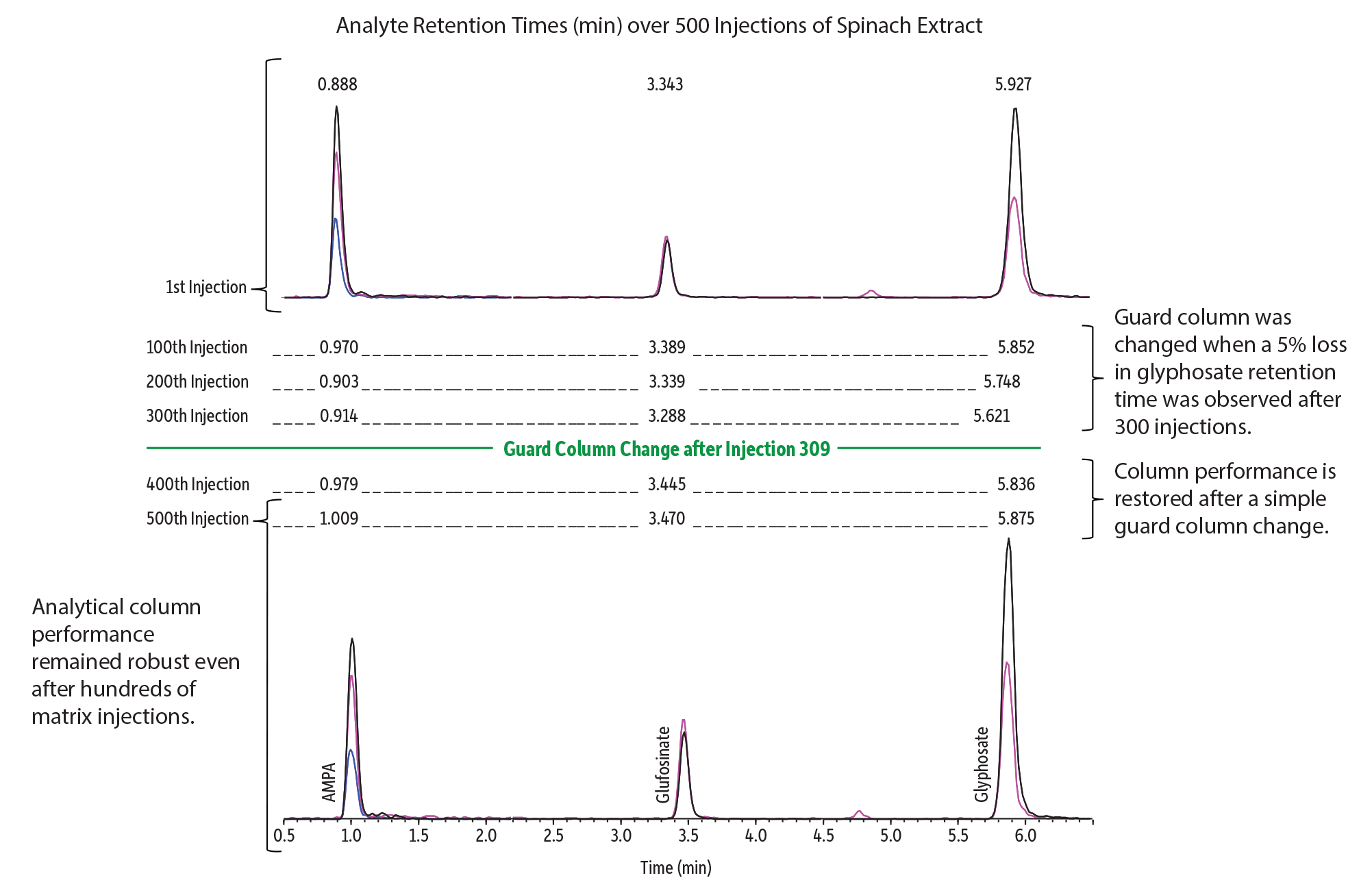Fast and Rugged Direct Analysis of Polar Pesticides in Spinach
Featured Application: Polar Pesticides in Spinach on Raptor Polar X by LC-MS/MS

- No time-consuming derivatization, ion-pairing steps, or long waits for column equilibration.
- Unique stationary phase provides good retention and efficient elution, resulting in better peak shape.
- Robust column performance ensures consistent chromatography and reliable results.
The direct analysis of polar pesticides, such as glyphosate, its main metabolite AMPA, and glufosinate, is difficult because they are not retained well on reversed phase columns, and chelation with metal surfaces in the LC-MS/MS can significantly reduce response. Derivatization and ion-pairing reagents are often used to improve performance, but they require additional sample preparation time and can produce unfavorable side effects (precipitates, long equilibration times, system contamination, etc.).
Using a Raptor Polar X column is a better solution because the novel stationary phase offers stronger interaction with polar anionic compounds. It features hybrid retention modes (HILIC and ion exchange) and provides strong retention yet allows analytes to be quickly eluted as symmetrical peaks through simple mobile phase changes. In this analysis of polar pesticides in spinach, excellent chromatographic performance is seen for all three compounds with a total analysis time of just eight minutes. Further, peak shapes and retention times remain stable over hundreds of matrix injections, and a simple guard column change restores full performance. This fast, simple, and effective workflow is a good alternative for food labs interested in the direct analysis of polar pesticides without the need for complex and time-consuming procedures.
FSFA3215-UNV


